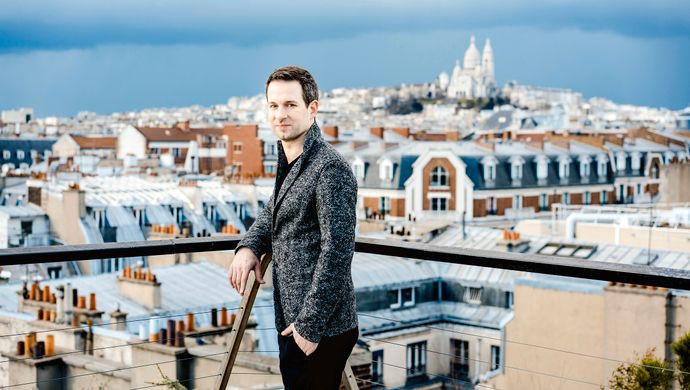
Olivier Messiaen
Masterpieces from the 20th century:
Vingt regards sur l’enfant Jesus (for solo piano)
In his composing, Messiaen considered freedom crucial. He let himself be guided by Catholic faith, his love of nature, and his awe of the cosmos. He translated these elevated sources of inspiration into an evocative soundscape anyone could enter. His Vingt regards sur l’enfant Jésus is an enormous work, spanning about two and a half hours. His music is boundless in other ways, too: it breaks free from the time signatures and rhythms we are familiar with, and it does not conform to the traditional harmonic language of suspense and relaxation.
Monumental work
In 1944, Messiaen was invited by the director of Radio France to write music to texts by writer Maurice Toesca on the theme of the birth of Christ. It was the last year of the war, and in this difficult time, the radio apparently wanted to broadcast something hopeful. The idea was that music and text would alternate during the broadcast. Messiaen read Toesca’s manuscript, Les douze regards, became inspired and within six months wrote twenty ‘regards’ instead of twelve.
With that, a monumental work grew out of a modest commission. The intense focus on his faith and his strictly personal musical expression of it, also helped Messiaen cope with the misery of war and the incurable illness of his wife Claire Delbos. When the work was finished, it turned out there was much more music than text, and a radio broadcast never materialised. On 26 March 1945, Vingt regards sur l’enfant Jésus premiered without text in the by then liberated Paris. The extremely difficult piece was performed by his virtuoso student Yvonne Loriod, who would become his second wife.
Coloured chords
There are a number of ‘leitmotifs’ connecting the movements, but the most important is the theme of God. This theme is not a melody but a sequence of beautifully coloured chords that constantly change over the course of the work. With these changes, Messiaen expresses the theological transformations of God the Father through the creation of the world, the birth of Jesus, and the glory of the church.
At the centre is No 10: ‘Contemplation of the joyful Spirit’, a fiery and rhythmic dance as an expression of euphoric happiness. In the last movement, ‘Contemplation of the church of love’, the theme of God appears throughout, and the piece ends in sheer ecstasy. And one really does not have to be Catholic to be captivated by this ecstatic music.
This is a translation of the original Dutch text by Katja Reichenfeld





